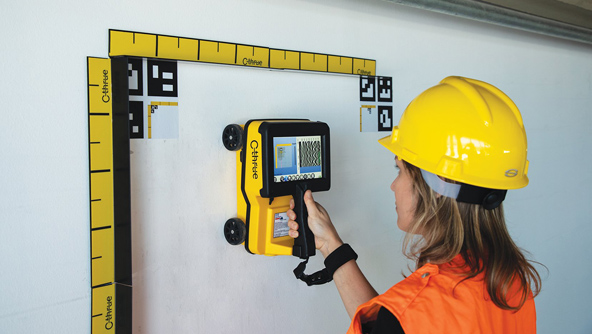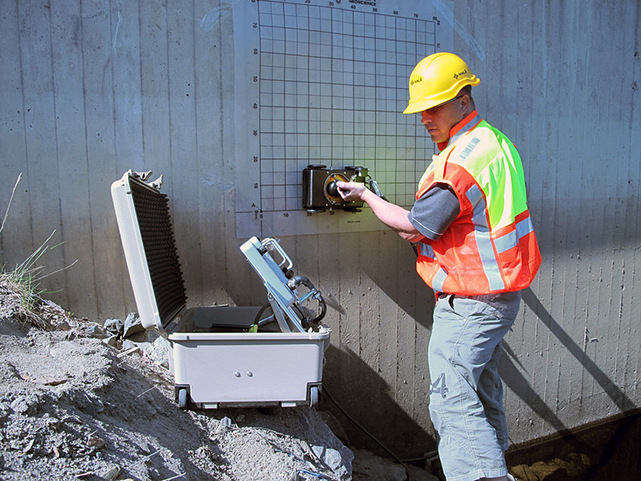RainierGPR Service Areas: Comprehensive Insurance Coverage for Concrete Scanning
RainierGPR Service Areas: Comprehensive Insurance Coverage for Concrete Scanning
Blog Article
Enhancing Project Planning and Implementation Via Advanced Concrete Scanning Techniques
In the world of job planning and insight, implementation and accuracy are important elements that can make the distinction in between success and obstacles. Advanced concrete scanning methods have actually become an innovative device readied to elevate the criteria of task management within the building industry. By using innovative technology, these techniques supply a glimpse into the structural integrity of a building also prior to the first block is laid. The implications of such advancements are profound, assuring a paradigm change in just how jobs are approached and supplied.
Advantages of Advanced Concrete Scanning Techniques

Improved Precision in Task Analyses
Enhancing task analyses with sophisticated concrete scanning methods dramatically boosts the accuracy and integrity of building and construction analyses. By utilizing innovative scanning innovations such as ground-penetrating radar (GPR) and 3D imaging, job teams can now get thorough understandings into the problem of concrete frameworks, determining prospective defects or weaknesses that might not show up to the naked eye. This enhanced degree of precision in job assessments enables construction professionals to make more enlightened decisions concerning repair and upkeep methods, bring about boosted general project results.
Additionally, the enhanced precision in task analyses accomplished through innovative concrete scanning methods helps in lessening the danger of unexpected issues throughout the construction stage. By proactively identifying concealed anomalies within concrete structures, such as rebar corrosion or spaces, job groups can resolve these concerns at an early stage, avoiding pricey delays and revamp later in the job lifecycle. Eventually, the improved precision in project evaluations facilitated by sophisticated concrete scanning techniques contributes to higher efficiency, cost-effectiveness, and high quality in building and construction jobs.
Very Early Identification of Structural Difficulties
Early detection of architectural obstacles plays a critical role in making sure the stability and safety of concrete structures throughout the building and construction process. Determining possible concerns at a beginning enables for prompt treatment, preventing expensive rework, timetable hold-ups, and safety hazards. Advanced concrete scanning methods, such as ground-penetrating radar (GPR) and 3D imaging, make it possible for task teams to uncover concealed issues, gaps, reinforcement design disparities, and various his response other abnormalities that could compromise the structure's stability.
By carrying out these techniques during the planning and execution phases, building professionals can proactively deal with structural difficulties before they intensify into major issues. As an example, finding poor concrete cover over support bars beforehand can protect against deterioration and architectural weakening in the lengthy run - RainierGPR Service Areas. In addition, recognizing variants in concrete density or thickness can help optimize material use and ensure consistent stamina homes throughout the framework

Inevitably, very early identification of structural challenges via innovative concrete scanning not only improves the total high quality and toughness of the building but likewise contributes to a much safer built environment for users and occupants.
Boosted Precaution in Construction
The implementation of robust safety and security methods is imperative in the building and construction industry to alleviate risks and secure the wellness of employees and stakeholders. To enhance security procedures, building firms are progressively embracing technological developments such as wearable tools that keep an eye on workers' important indicators and find potential health concerns in real-time. By prioritizing security via the consolidation of advanced modern technologies Recommended Site and comprehensive training programs, building jobs can substantially minimize accidents and develop a safe working setting for all included.
Streamlining Job Management Processes
To optimize operational effectiveness discover this info here and make certain project success in the building sector, an emphasis on streamlining job administration procedures is important. By carrying out reliable task management processes, building jobs can decrease hold-ups, reduce costs, and improve general performance.

Final Thought
To conclude, the application of innovative concrete scanning techniques offers countless advantages for task planning and implementation. These strategies give improved precision in task evaluations, very early identification of structural difficulties, improved precaution in building, and streamlined job administration processes. Incorporating these methods into task operations can inevitably bring about a lot more effective and efficient outcomes in building and construction jobs.
Ultimately, the improved precision in task evaluations assisted in by sophisticated concrete scanning techniques adds to greater effectiveness, cost-effectiveness, and quality in construction tasks. RainierGPR Service Areas.
To enhance operational efficiency and make sure job success in the construction industry, an emphasis on simplifying job management procedures is crucial. By carrying out efficient task administration processes, building and construction projects can decrease delays, reduce expenses, and boost general productivity. By enhancing project monitoring processes with technology assimilation, clear communication, and data-driven methods, building and construction jobs can attain higher performance, cost-effectiveness, and successful results.
These techniques provide better accuracy in task assessments, early recognition of structural difficulties, boosted safety procedures in building and construction, and streamlined project management processes.
Report this page